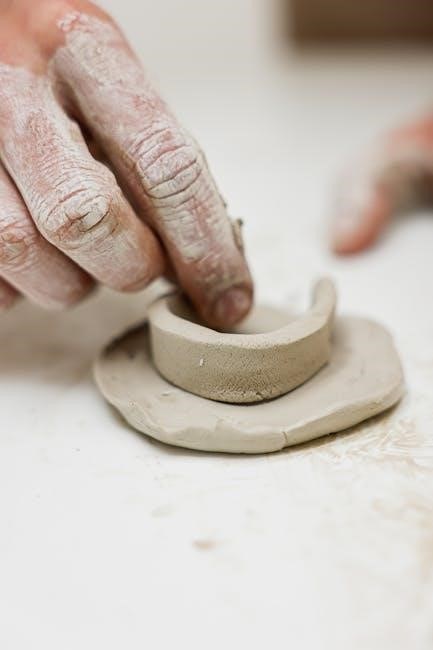Mirro Pressure Cooker Manual: A Comprehensive Guide
Welcome to your comprehensive guide to the Mirro pressure cooker manual. This resource provides valuable information about the Mirro pressure cooker‚ including operation‚ safety‚ recipes‚ cleaning‚ and maintenance. Understanding the manual ensures safe and efficient use of this popular kitchen appliance.
Mirro pressure cookers are kitchen appliances designed for time-saving cooking. They significantly reduce cooking time compared to conventional methods‚ offering a faster way to prepare meals. These cookers use different recipes than conventional pans‚ requiring users to understand the specific instructions for pressure cooking. Manuals for Mirro pressure cookers provide essential information on operating the appliance safely and effectively. Vintage manuals may encourage techniques no longer considered safe for modern cookers. Therefore‚ it’s crucial to exercise caution and adapt instructions accordingly.
Mirro pressure cookers have a rich history‚ with older models still in use today. Finding and using Mirro manuals online can be challenging‚ but resources are available. These manuals often include recipes and timetables for popular foods. The quantity of ingredients depends on the cooker’s size‚ and the cooking time varies based on the food being prepared. Always prioritize safety when using a pressure cooker‚ and refer to the manual for proper operation. The importance of reading the instructions provided is of high priority‚ and should be taken seriously to prevent burns or other serious injuries.
Understanding the Components of a Mirro Pressure Cooker
To safely and effectively use a Mirro pressure cooker‚ understanding its components is essential. The primary parts include the pot‚ lid‚ sealing ring (or gasket)‚ pressure regulator (or weight)‚ and vent pipe (or steam release valve). The pot holds the food and liquid‚ while the lid creates a tight seal for pressure to build; The sealing ring ensures an airtight closure between the lid and the pot.
The pressure regulator maintains the desired pressure level inside the cooker. When the pressure exceeds the set point‚ the regulator releases steam. The vent pipe allows steam to escape during normal operation and pressure release. Older Mirro models may have different component designs compared to newer ones. It’s crucial to consult the specific manual for your model to identify and understand each part. Familiarizing yourself with these components allows for proper assembly‚ operation‚ and maintenance‚ contributing to a safer and more efficient cooking experience. Using the right components is critical in preventing any burns or other injuries.
Safety Instructions and Precautions
Prioritizing safety is paramount when using a Mirro pressure cooker. Always read the manufacturer’s manual carefully before operating the appliance. Ensure the sealing ring is properly seated and in good condition to prevent steam leaks. Never overfill the pressure cooker‚ as this can clog the vent pipe and lead to dangerous pressure buildup. Always leave the steam to flow for 10 minutes to exhaust the air.
Do not attempt to open the lid while there is still pressure inside. Use the recommended pressure release method for your model‚ such as natural pressure release or quick release‚ following the instructions in the manual. Regularly inspect the vent pipe and pressure regulator for any blockages. Clean them thoroughly to ensure proper functioning. When cooking foods that expand‚ such as beans or grains‚ adjust the liquid level accordingly to prevent clogging. Never leave the pressure cooker unattended while it is in use. Keep children and pets away from the operating pressure cooker to prevent accidental burns.
Operating Instructions: A Step-by-Step Guide
Operating a Mirro pressure cooker requires careful attention to detail. First‚ ensure the cooker and all its parts are clean and in good working condition. Add the ingredients and the specified amount of liquid according to your recipe‚ being mindful not to overfill the pot. Secure the lid properly‚ ensuring the sealing ring is correctly positioned. Place the pressure cooker on the stove over medium-high heat.
Allow steam to vent from the vent pipe for the recommended time to exhaust air. Then‚ place the pressure regulator on the vent pipe. Once the pressure regulator starts jiggling steadily‚ reduce the heat to maintain the desired pressure level. Cook for the time specified in your recipe. Once the cooking time is complete‚ turn off the heat and allow the pressure to release naturally‚ or use the quick-release method if instructed. Finally‚ carefully open the lid‚ tilting it away from you to avoid steam burns. Always consult your Mirro pressure cooker manual for specific instructions and safety precautions related to your model.
Cooking Times and Recipes
Mastering cooking times is essential for successful pressure cooking. Cooking times vary greatly depending on the food‚ the size of the pieces‚ and the desired tenderness. Consult your Mirro pressure cooker manual for specific timing charts. For instance‚ vegetables generally require shorter cooking times than meats. Harder vegetables like potatoes need more time than leafy greens.
When adapting recipes‚ remember that pressure cooking significantly reduces cooking time compared to conventional methods. Always start with the minimum recommended time and increase if needed. Experimentation is key to finding the perfect cooking time for your favorite dishes. Consider recipes specifically designed for pressure cookers‚ as they often provide more accurate timing and liquid ratios. Remember that quantities of ingredients depend on the size of the cooker. Many vintage Mirro manuals contain recipes and timetables for popular foods. From hearty stews to tender roasts‚ the possibilities are endless with your Mirro pressure cooker.
Cleaning and Maintenance
Proper cleaning and maintenance are crucial for prolonging the life of your Mirro pressure cooker and ensuring safe operation. Always allow the cooker to cool completely before cleaning. Disassemble the cooker‚ removing the sealing ring and any other detachable parts. Wash all components with warm‚ soapy water. Use a soft cloth or sponge to avoid scratching the interior surface.
Pay special attention to cleaning the vent pipe and safety valve‚ ensuring they are free from any obstructions. A small brush or pipe cleaner can be helpful for this. The sealing ring should be inspected regularly for cracks or damage and replaced as needed. Avoid using abrasive cleaners or scouring pads‚ as these can damage the cooker’s surface. Models with non-stick coatings make cleaning easier. After washing‚ dry all parts thoroughly before reassembling the cooker. Store the cooker in a dry place to prevent rust and corrosion. Regular maintenance will keep your Mirro pressure cooker in optimal condition for years to come.
Troubleshooting Common Issues
Even with proper use‚ you might encounter some common issues with your Mirro pressure cooker. One frequent problem is the cooker not reaching pressure. This could be due to insufficient liquid in the pot‚ a worn sealing ring‚ or the vent pipe being clogged. Ensure you have the correct amount of liquid for your recipe and inspect the sealing ring for damage. Clean the vent pipe thoroughly.
Another issue is steam escaping from the sides of the lid. This usually indicates that the lid is not properly sealed. Check that the lid is correctly aligned and that the sealing ring is clean and in good condition. If food splatters are blocking the vent pipe‚ carefully release the pressure and clean the pipe. If the pressure regulator jiggles too vigorously‚ reduce the heat. If the cooker releases pressure during cooking‚ it may be overloaded. Reduce the amount of food in the cooker. For persistent problems‚ consult the manual or a qualified appliance repair technician.
Vintage Mirro Cookers: Safety Considerations
Vintage Mirro pressure cookers can be valuable tools‚ but using them safely requires extra caution. Older models may lack the safety features found in modern cookers‚ such as automatic pressure release mechanisms and locking lids. Before using a vintage cooker‚ carefully inspect all components‚ including the sealing ring‚ vent pipe‚ and pressure regulator. Replace any worn or damaged parts with appropriate replacements‚ if available.
Vintage pressure cooker manuals may encourage practices that are no longer considered safe. Always prioritize current safety guidelines. Ensure the vent pipe is clear before each use to prevent pressure buildup. Never leave a pressure cooker unattended while it’s in operation. Gradually release pressure after cooking instead of using quick release methods. If you are unsure about the safety of your vintage Mirro cooker‚ it is best to consult with a qualified appliance repair technician or consider using a modern pressure cooker instead.
Finding and Using Mirro Manuals Online
Locating a Mirro pressure cooker manual online can be a helpful way to ensure safe and effective use of your appliance‚ especially if you have misplaced the original. Several websites offer downloadable manuals for various Mirro models. Start by searching online using the model number of your cooker‚ if available‚ along with terms like “Mirro pressure cooker manual PDF.”
Websites dedicated to appliance manuals or vintage kitchenware are excellent resources. Once you find a manual‚ carefully review the safety instructions and operating procedures specific to your model. Pay close attention to recommended cooking times and pressure levels for different foods. Remember that vintage manuals may contain outdated information‚ so always cross-reference with current pressure cooking guidelines.
If you cannot find the exact manual for your model‚ a similar model’s manual might provide helpful general guidance. However‚ always prioritize safety and consult with an expert if you have any doubts. Appliance Factory Parts may host some manuals.

